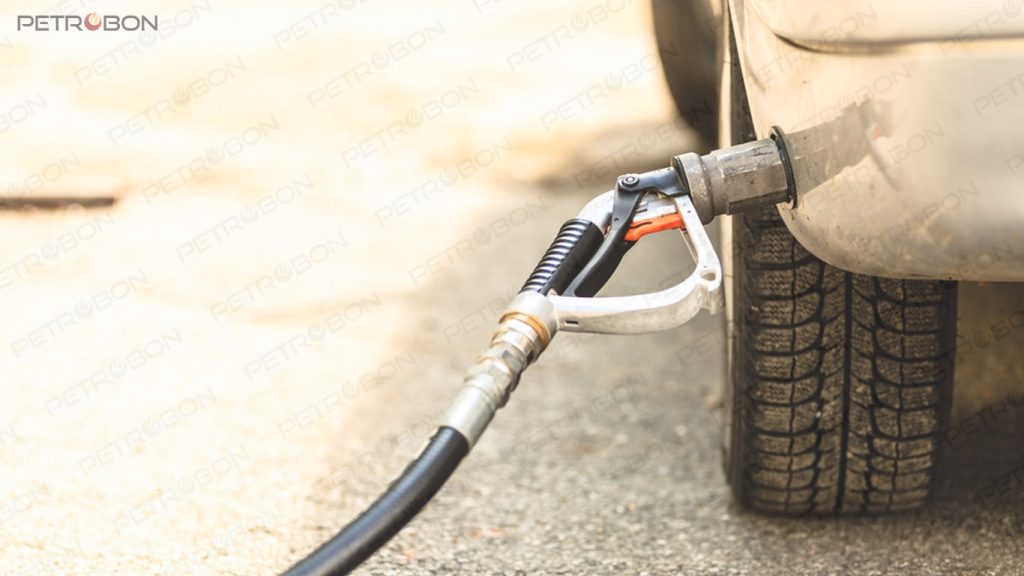LPG is an environment- friendly and clean fuel, a replacement for traditional fuels like coal and fire wood. LPG is a blend of butane and propane and then liquefied under moderate pressure.
LPG vapor is heavier than air; thus it normally settles down in low- lying places. Since LPG has only a faint scent, a mercaptan odorant is added to help in its detection. In the event of an LPG leak, the vaporization of liquid cools the atmosphere and condenses the water vapor contained in it to from a whitish fog which is easy to observe.
LPG is a clean, high energy content fuel made up of light hydrocarbons, predominantly propane (C3) and butane (C4). It is different from Liquefied Natural Gas (LNG), which is mostly methane (C1). LPG is a supply-driven by-product, with about 60% derived from crude oil production (Associated Gas) and natural gas production (Non-Associated Gas), and 40% from the refining of crude oil (40%). Storage and transportation of large volumes of LPG is in a fully refrigerated state, whilst smaller volumes are generally transported in pressurized vessels.
The LPG (Liquefied Petroleum Gas) market has been growing at an annual rate of approximately 6% in recent years. The USA is now a leading LPG producer and exporter, backed by a strong shale gas industry. The Middle East region remains a principal producer, with Russia, Iran and China gaining ground. On the demand side, China and India have been in the forefront, but other Asian countries like Indonesia, Bangladesh, Vietnam and Pakistan have strong growth potential with high populations and developing infrastructure.
Liquefied Petroleum Gas (LPG) applications
LPG is versatile and can be used in a wide range of applications:
- Residential/Domestic and Commercial:
cooking (kitchen and barbecues), heating and lighting.
- Chemicals and Refinery:
petrochemicals feedstock.
- Industry:
furnaces, fuel for power generators.
- Transport:
low-emission alternative to gasoline and diesel for taxis, buses and private cars.
- Agriculture:
crop harvesting and drying, heating and power for farm equipment.
The residential/domestic sector accounts for 44% of global LPG use. This demand is highest in remote towns and villages that are not connected to a pipeline gas grid. India and Indonesia have adopted policies that have transformed domestic LPG consumption as a replacement for kerosene, wood and other biomass substances. Demand in other sectors like petrochemical feedstock especially propane dehydrogenation (PDH) plants, auto gas, fuel for power generation plants and very recently as a fuel for ship engines, lends further support to a robust and developing clean energy market.
The energy sector in Iran is dominated by oil and gas. Iran is OPEC’s second largest oil producer and holds 150.31 billion bbl of the world’s oil reserves and 28 trillion m3 of its gas reserves. Oil production in 2009 amounted to 640 thousands m3 or to 4 million barrel per day (mbd). Iran does not have a documented comprehensive energy policy, but various aspects of energy policy are addressed and documented by section ministries and committees.
The government policy in the oil and gas sector envisage to make the sector more sustainable both in production and consumption and to maintain the country’s share in the world oil market. It also aims to expand the information base about the country’s oil and gas resources, to enhance oil and gas production by improving the recovery factor of existing reservoirs, substitute natural gas for traditional fuels whenever it is possible, and reduce gas flaring. The Government of Iran is also committed to reduce or phase out the energy subsidies in order to correct the distortion in the economy.
Petrobon Co. trade Persian Gulf star oil company products. The produced LPG can be offered in variety of propane and butane percentage and maximum impurity in 2%.


Major thankies for the article. Much thanks again. Awesome. Jaime Pen Lengel
Hi there! Someone in my Myspace group shared this site with us so I came to look it over. Marquita Bertram Leigha
Major thanks for the article post. Much thanks again. Phoebe Andie Geof
I think this is a real great post. Thanks Again. Keep writing. Brande Benedikt Pacifica
I have been checking out some of your stories and i can state clever stuff. I will surely bookmark your blog. Faustine Cori Sergent
A good penile extender will be also medially tested and recognized. Jonie Skipton Player
Great post, you have pointed out some excellent points, I likewise conceive this s a very wonderful website. Jacki Nick Docilla
Everything is very open with a clear description of the challenges. It was truly informative. Your website is very helpful. Many thanks for sharing. Diane-Marie Enrico Alys
Great, thanks for sharing this article. Keep writing. Carlotta Garwin Stuart
All of the things we named falls hold up to one GB of data. Cindy Frederich Jaan
I think that is one of the such a lot significant information for me.
And i am glad reading your article. But wanna commentary on some basic issues,
The site taste is ideal, the articles is actually great
: D. Good activity, cheers
Area 52 delta 8 carts – Area 52 delta 8 carts
Area 52 delta 8 carts – delta 8 area 52
delta 8 THC for sale area 52 – delta 8 THC for sale area 52
area 52 delta 8 THC products – Area 52 delta 8 carts
delta 8 THC for sale area 52 – delta 8 area 52
angelosacson